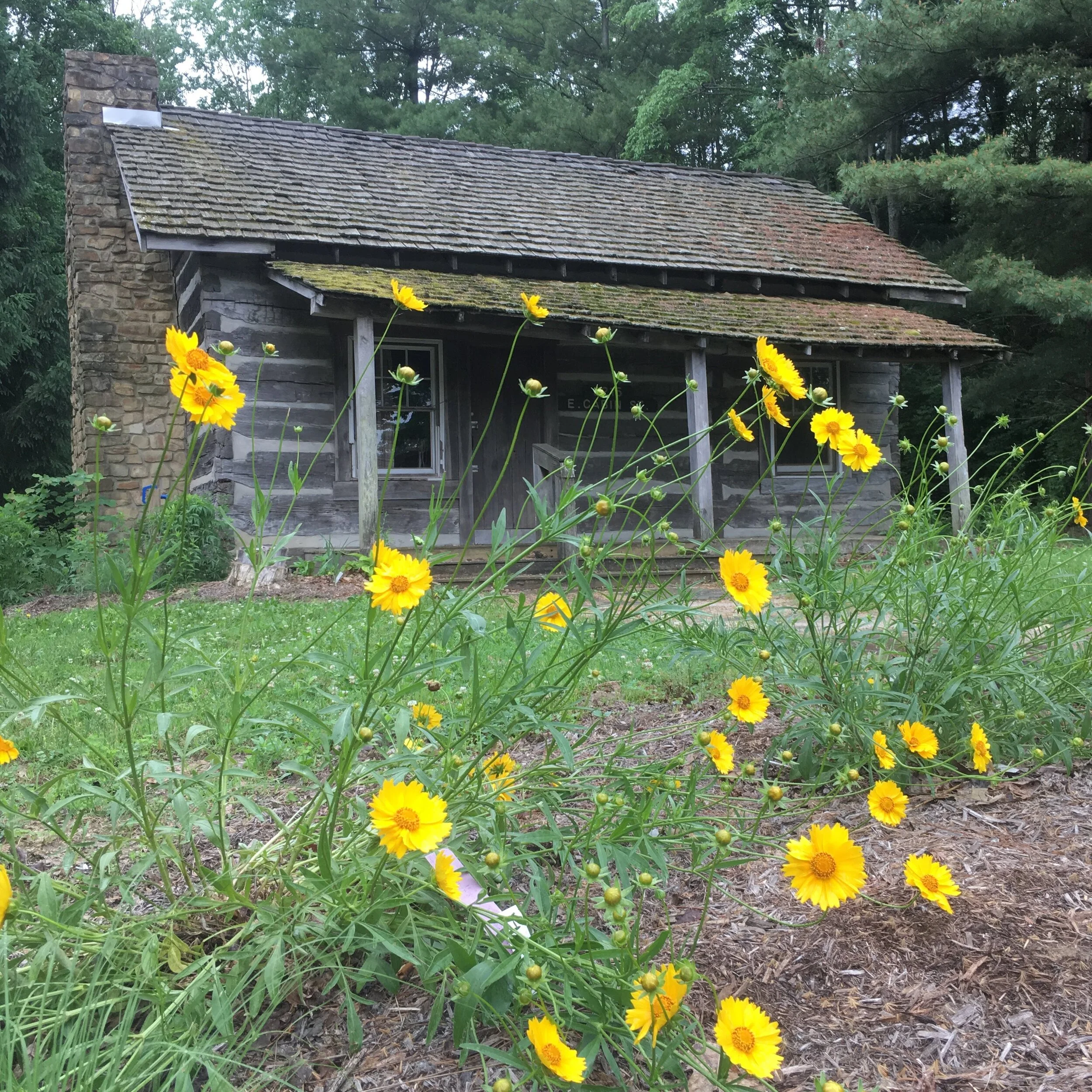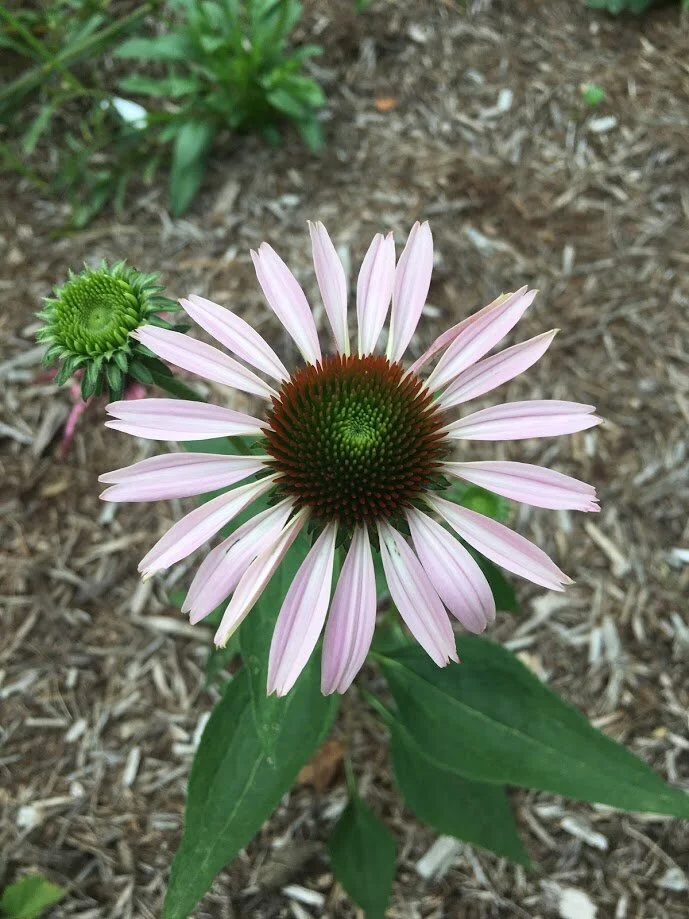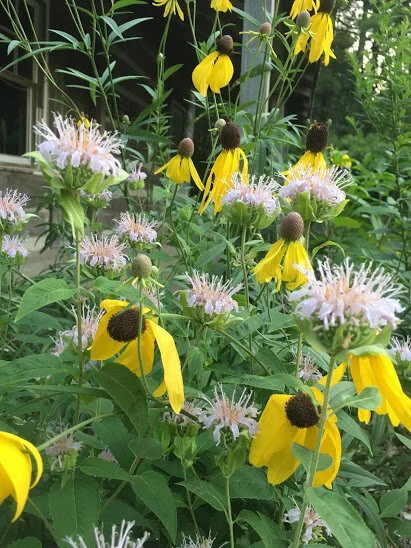Welcome to McClain Cabin at Johnson County Park!
This library focuses on the importance of our native bumblebee species also known as the genus of Bombus (fun word, right?). Bumblebees are some of the most efficient pollinators we have in Indiana.
Bumblebees are classified into different groups by their tongue length: short, medium, & long (thanks for that entomologists)…their tongues can determine what kinds of flowers they are able to visit to collect pollen and nectar
Unlike most native bee species, bumblebee nests can contain 50 to 500 individuals through the growing season but yeah unfortunately, they all die off in the fall. Except for the queen, she hibernates and makes new bumblers in the spring. YAS QUEEN! (Sorry, we had to…)
Bumblebees are such efficient pollinators because of their size and what is called buzz pollination. Their wings can beat up to 130 times per second allowing them shake more pollen loose from the plants and flowers they are visiting. It’s not really on purpose that they do this but hey whatever works
Bumblebees size also allows them to produce heat so they can be active earlier in the spring, on cooler days, and later in fall
Get Your Buzz On to Help Protect Native Bumblebees
Relax with the Pesticides
Limit the use of pesticides especially in the spring and early summer as queens emerge and are in a vulnerable life stage. We’ve all been there. Moving on…
Hit All the Bloom Seasons
Plant native plants and include a variety of plants that bloom from early spring to late fall to provide constant pollen and nectar sources for bumblebees cause there a limited options for the bumblers in the early spring and late fall when they are the first to emerge and last to hibernate
Leave the Leaves
Don’t clean up your garden in the fall, leave areas of your yard unmowed, and don’t till designated areas of your yard … this allows queens to be protected while hibernating in the winter. This also means waiting until late April or May to rake areas of your yard to avoid disturbing hibernating queens. Less is more when it comes to managing your property for bumblebees. We know, it seems backwards to us too.
Scroll through the gallery below to see the cabin plants in bloom!
Click on photos and USDA Fact Sheet links to learn more about the species!
Need Identification Help? Want to Show Us What is Blooming?
Native Seed Packets in the Library
Both Prairie Blazingstar and Wild Bergamot are guaranteed to attract native bumblebees and other pollinators! Click on the images & USDA Fact Sheet links to learn more about these summer blooming species to see if they can find a home on your own property!
Johnson County Park’s McClain Cabin
Trail Distance: 0.39 miles
Terrain: Natural and Flat
Difficulty: Easy, With Uneven Surfaces
Hiking & Biking only. No horses or motorized vehicles are permitted on the Cabin Trail.
History of McClain Cabin
The Log cabin, which now sits in the Johnson County Park, is believed to have been built between 1830-1835 by Landon Hendricks.
The cabin originally sat one-quarter mile west of 600 East on 50 South in Section 20 of Franklin Twp. (now Needham Twp.) near the old Hendricks School.
The cabin was moved on a sled pulled by horses about a mile southeast across the fields to a site on the Greensburg Road in Section 29 now owned by Margaret McClain. The route followed across the fields ran along the west side of a ditch leading to Sugar Creek. When the cabin was moved, a new house was built where the cabin had been. That home still occupies the site.
In the mid-1800’s Alexander McClain settled on Section 29. It was believed that the cabin was moved to McClain’s property sometime during the next few years because his son, George, took his wife, Orpha Belk, to the log cabin on Greensburg Road on their honeymoon night to live.
The cabin was disassembled by Wayne Martin in 1984 to be moved to the Johnson County Park. The cabin was rebuilt by Martin and voluntary help from the Soil and Water Conservation District and the Johnson County Park Board.
Cabin Area Information
The Indiana Live Steamers Inc. operates a miniature railroad that meanders through the woods located behind the cabin. They offer public rides on certain dates during the warmer Indiana months. While you are on the trail, please be respectful of the track and keep your eyes peeled if the trains are running.
In 2017, the Johnson County Soil & Water District received a grant that funded the new landscaping surrounding the cabin. The trees, plants and grasses used are all native species of Indiana! These are representative of species would have been found near the cabin when it was originally constructed.
The cabin is typically open for tours or scheduled times and during the Heartnut Community Festival.
A big thank you to Nicole Marshall from Waypoints Designs for doing the artwork throughout the Little Native Seed Library Trail! Click on the Button below to learn more about them!































